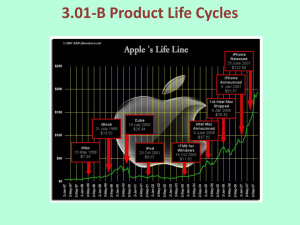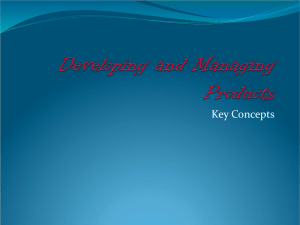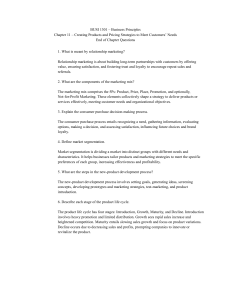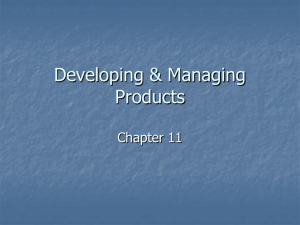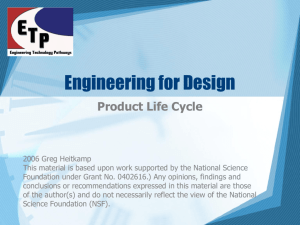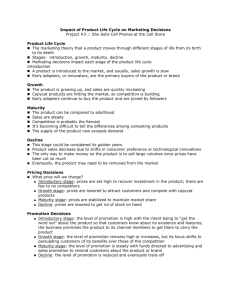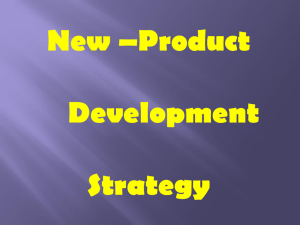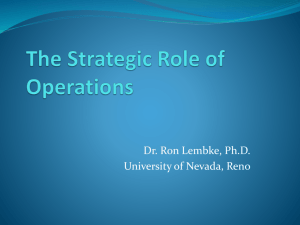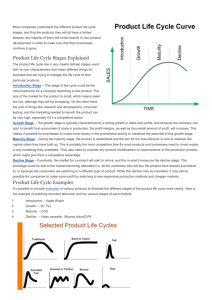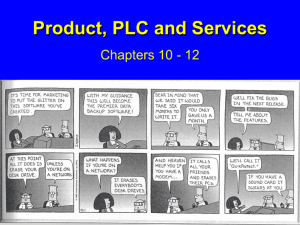PRODUCT LIFE CYCLE LESSON
advertisement
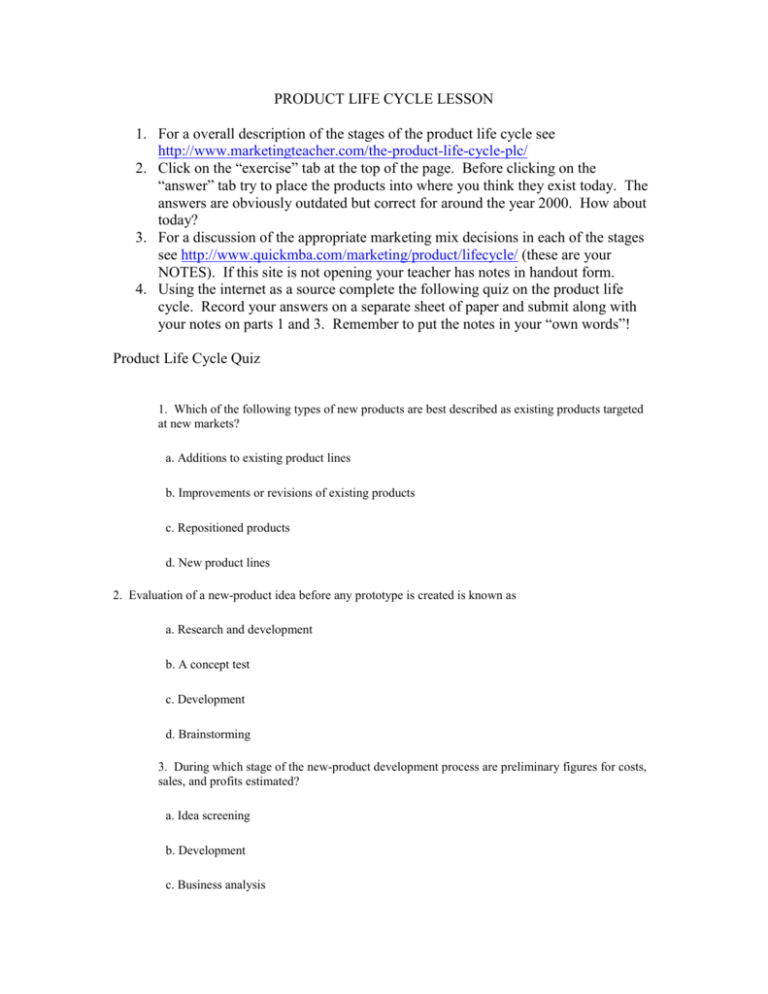
PRODUCT LIFE CYCLE LESSON 1. For a overall description of the stages of the product life cycle see http://www.marketingteacher.com/the-product-life-cycle-plc/ 2. Click on the “exercise” tab at the top of the page. Before clicking on the “answer” tab try to place the products into where you think they exist today. The answers are obviously outdated but correct for around the year 2000. How about today? 3. For a discussion of the appropriate marketing mix decisions in each of the stages see http://www.quickmba.com/marketing/product/lifecycle/ (these are your NOTES). If this site is not opening your teacher has notes in handout form. 4. Using the internet as a source complete the following quiz on the product life cycle. Record your answers on a separate sheet of paper and submit along with your notes on parts 1 and 3. Remember to put the notes in your “own words”! Product Life Cycle Quiz 1. Which of the following types of new products are best described as existing products targeted at new markets? a. Additions to existing product lines b. Improvements or revisions of existing products c. Repositioned products d. New product lines 2. Evaluation of a new-product idea before any prototype is created is known as a. Research and development b. A concept test c. Development d. Brainstorming 3. During which stage of the new-product development process are preliminary figures for costs, sales, and profits estimated? a. Idea screening b. Development c. Business analysis d. Test marketing 4. Which of the following characteristics of firms is not a common reason for successful newproduct introductions? a. Avoiding team approaches to new product development b. Avoiding developing products that are not the best product possible c. A history of carefully listening to customers d. A vision of what the market may be like in the future 5. According to the diffusion process model, which of the following categories of adopters is the first group to accept a new product? a. Innovators b. Early adopters c. Early majority d. Laggards 6. Five characteristics affect the rate of acceptance of a new product. ______ is the degree to which a product is perceived as superior to existing substitutes. a. Compatability b. Relative advantage c. Complexity d. Trialability 7. In the _____ stage of the product life cycle, sales grow at an increasing rate, many competitors enter the market, and profits rise rapidly. a. Introduction b. Growth c. Maturity d. Decline 8. In this stage in the lifecycle, product design changes tend to become stylistic rather than functional. a. Introductory stage b. Growth stage c. Maturity stage d. Decline stage 9. Primary demand promotion must occur during which of the following stages of the product life cycle? a. Introductory b. Growth c. Maturity d. Decline 10. The real purpose of using a formal new-product development process is to filter out unworkable product ideas. a. True b. False 11. The time a product spends in any one stage of the product life cycle does not typically vary from item to item. a. True b. False
